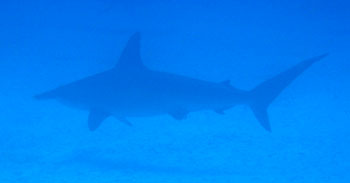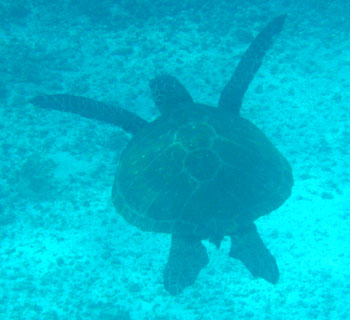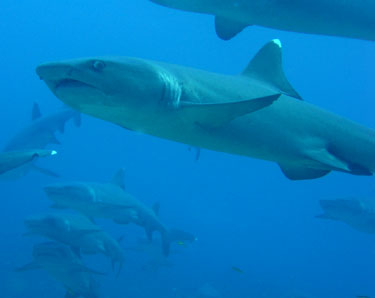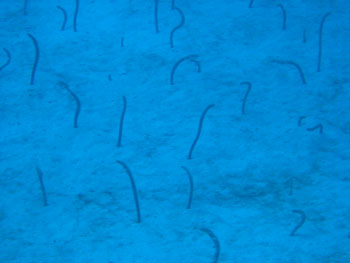|
We saw a large school of white-tipped sharks, but now, we
were at their level--we dove to 80 feet deep. This one gave Dean a surprised look.
>>
We saw hammerhead sharks for the first time.
They were in the distance, though, so it was tough to get a good
photo. The shark below is a hammerhead, but it's not easy to
see the weird, side-ways protrusions on its head where the eyes are.

The
other first for us were the garden eels. They live in the
sandy bottom and come out of their holes to find food floating by
and wave in the currents like a field of grass. They retreat
into their holes if you get near to them. >>

|


<< We saw
swimming sea turtles on our dive, on our snorkels, and from
the dinghies. They are quite graceful underwater, but on
shore, they seem quite awkward.
We got up early one morning and took a quick hike
across an island to a beach where Kique thought that we'd sea turtles laying eggs
high on the beach. We saw a couple of turtles
ponderously making
their way back into the sea by the time we got there, but we could
see by the tracks that quite a few turtles had been there that
evening.
|
|
There are also the famous giant land tortoises
here at The Galápagos. Some are wild, but many have been
rounded up and put on farms for their own
protection. Early settlers used to eat them, and
rats that came with the boats ate their eggs. So now
they are protected like much of the wildlife. There are a
couple of different species that are endemic to specific
islands.
|